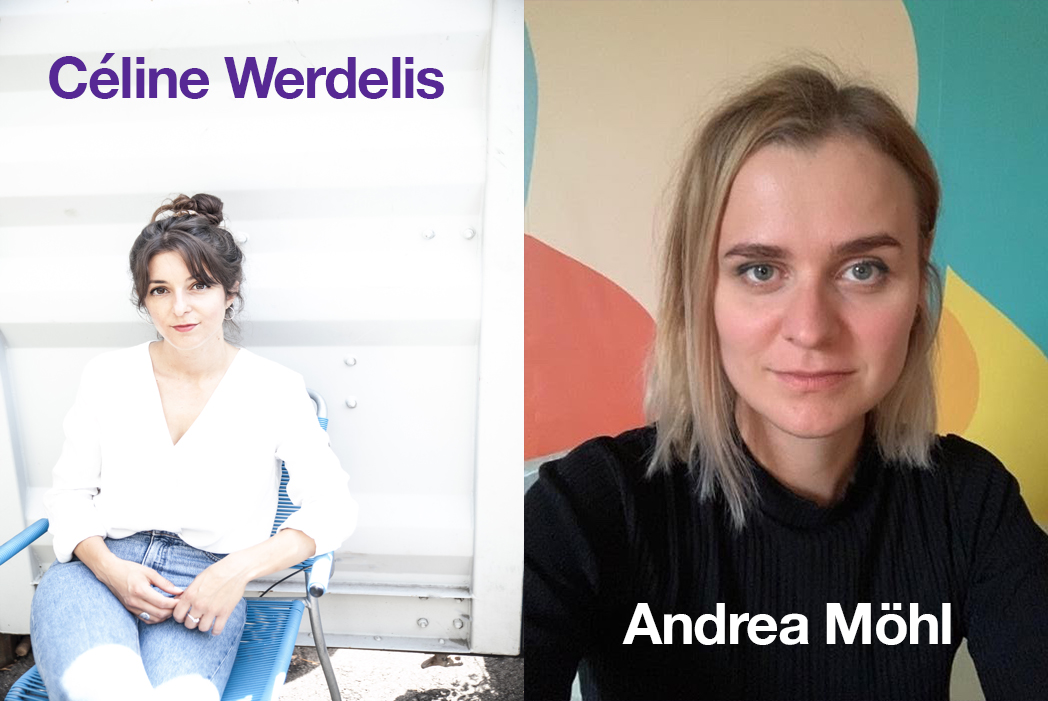It’s not every day you get the opportunity to pitch your ideas to one of the biggest football clubs on the planet right now. So, when Hyper Island Design Experience (DXD) students, Céline Werdelis and Andrea Möhl, received a challenge from City Football Group—the team behind the scenes at current Premier League leaders, Manchester City—it was game on. The question was posed: How might we [City Football Group] better understand the needs and emotional connections of overseas football fans?

Three Digital Experience Design teams were each given a region to research and focus on. Students worked closely with Industry Leader, Amanda Johnson and Matt Kendall from Retrofuzz and were given three weeks to respond to the brief. Their responses challenged City Football Group to consider new and creative research methods that would support inquiry into these overseas fanbases. This was a wonderful example of practice-based research and research informed design outputs. Let’s find out how our students got on.
How did you feel prior to pitching your idea to City Football Group?
Céline: It’s surreal to research for three weeks and then present what you’ve found out in just ten minutes! So, I was excited because we finally got to show what we had been working on for so long and, at the same time, I was nervous because we only had this one presentation, this one chance.
format_quote“That’s why it was all the more important for us to package the pitch in a story that keeps the client hooked from the beginning to the end.”
Our team was called ‘Stage Detectives’, and we were tasked with focusing on the USA for this challenge.
Andrea: We were invited to share our research activities that consisted of 3,000-word assignments. Together, we’d compile, critically engage, and reflect upon a key theme that arose from the live project. My team, named ‘Underneath’, was tasked with focusing on the region of China. I was confident about our proposal but also adrenalized because I was curious about the client’s opinion and questions.
How do you prepare for a pitching session such as this one?
Céline: We asked ourselves how we could best break down our idea in an understandable way. For this, we were able to draw on the learnings we had already gained. From a lecture by Kelley Van Dilla, founder of the Playground of Empathy, we got ideas on how people can “walk in other people’s shoes” i.e., how they can take other perspectives. From another guest speaker, Steve Rawling of NewThinking.Tools, we got ideas on how to build the storyline. With all these tools, we “built” our presentation and from there it was practice, practice, practice! Because to get what you want to say across clearly and concisely, you have to practice. Another important tip: It’s best to practise the pitch in front of an audience that doesn’t know the topic. Since we are so much into the subject, a “test audience” can clearly say there is still a need for explanation. At Hyper Island, we have such helpful test runs two days before the actual pitches.
Andrea: It helps to be well prepared; doing a dry run with the team, but also a couple of run-throughs on my own. I sometimes use the superwoman pose for two minutes or practice some breathing exercises before everything starts to center myself.
How did you react to the briefs? Were there any immediate challenges?
Céline: City Football Group had already done so much of their own research. I asked myself: “What else will we be able to find out here”, and “Will we find out anything at all”? I also wasn’t completely passionate about football at the time, so I was curious about the angle from which I would find my interest with this client. I felt intimidated and impressed at the same time in the beginning.
Andrea: I think it’s always a challenge to interpret the brief in the way the client meant it, but also to be critical about the question if that’s really what the client needs. This time it was a challenge, but also an opportunity to only focus on the research part of a project.
format_quote“As a designer, I’m rather used to delivering a solution, instead of simply focusing on the problems and needs to deliver this to the client. This was both challenging and a great opportunity to practice.”
What’s it like pitching to a global sporting organization?
Céline: It was a very open and helpful client. We got to interact with City Football Group employees during the project, which also built trust before the pitch. So, not only did we get the chance to get to know the client during the briefing stage, but we also had ongoing communication during the project, which was undoubtedly helpful to curb the pitch’s fear. Essentially, we felt we were pitching to someone we already knew a bit.
Andrea: To me it felt like every other pitch I’ve done before. The client acted at eye level and was very down to earth. But at the same time, I felt privileged to work for such a big organization, even though I’m not into football.
What were your standout learnings?
Céline: In our team, a major focus was the use of assumptions in research. We wanted to see how we could get to the bottom of them and why we have them.
format_quote“Getting to know our assumptions has helped us and moved us forward.”
Also, something we realized once again was that there is no “one right way”. It’s about consideration for each client around which tools and methods make sense to use or try out.
What will you take away from this experience?
Céline: Even though I already had a lot of research experience as a journalist, I could use and sharpen this experience in this human-centred design research context. Another learning was that I should not immediately suppress assumptions or, even worse, take them for truth, but instead challenge them and work with them. I was proud of the team because I felt that we’d succeeded in presenting our research to the clients so that, although they have already done a lot of research themselves, they have been able to benefit a lot from it. But I was also full of ideas on how we could put what we found out in the research into practice.
Andrea: It’s a bit cheesy, but the mantra ’team is everything’ seems to be true. It all comes back to good team collaboration. This also helps to increase the quality of the research findings and challenge personal biases.
format_quote“Furthermore, I now see the values of researching iteratively even more.”
By writing insight statements throughout the process, the team is able to detect gaps in their data and could adjust their process accordingly.
Want to find out more?
If you are interested in finding out more about our MA Digital Experience Design program, or you want to find out what other Master’s programs we have at Hyper Island, read more here. If you have any questions unanswered or want help with finding the right program for you, click here and book a call with our amazing admissions team.

